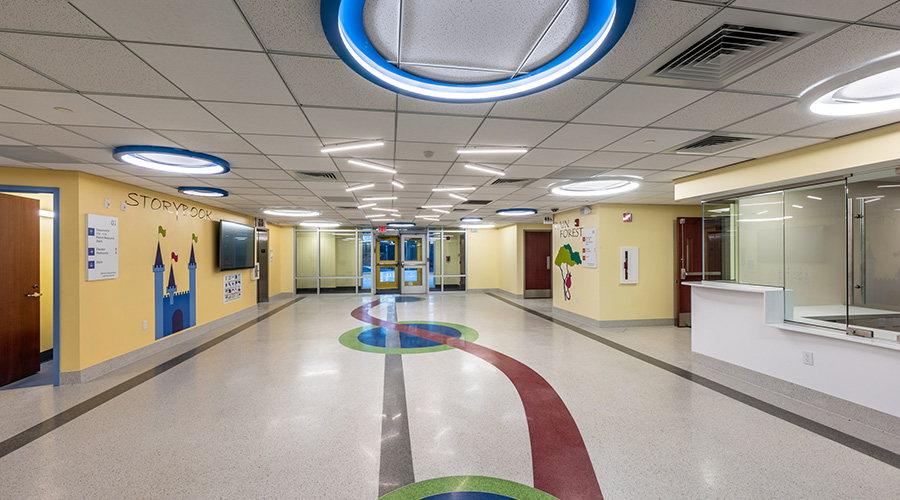Sustainability Delivers Hard Savings, Soft Benefits to Jordan, Pershing Elementary Schools
OTHER PARTS OF THIS ARTICLEPt. 1: This Page
The first two new public elementary schools constructed in University City, Mo., in more than 15 years are also the first in the St. Louis region to earn LEED certification. The sustainability measures delivered both hard dollar savings and soft benefits.
Passage of a $53.6 million bond issue in 2009 enabled the University City School District to move forward with construction of Barbara C. Jordan Elementary School and Pershing Elementary School, as well as to complete multiple additions and energy upgrades on existing school buildings. The improvements are part of a master plan developed to accommodate the district’s evolving student population.
“LEED entered into the conversation fairly early when we were working with the district’s board,” says Art Bond, president of Bond Architects, which oversaw the design of both projects. “Recycling and energy conservation have always been a priority in University City, and we wanted to create a model that the community could really rally behind.”
Though both schools are similar in cost, size and amenities, each has a unique design and aesthetic approach to reflect its specific site and community context.
The $11.5 million Barbara C. Jordan Elementary School, which opened in fall 2011, is a contemporary building arranged so its primary classrooms overlook the adjacent park to the north. Daylighting is maximized through the use of large south-facing clerestory windows with shading eaves. The two-story, 63,100-square-foot project includes 20 classrooms, two science labs, an administration area, cafeteria, gymnasium and library.
Opening a year later, Pershing Elementary School features a more traditional design, embracing the historical fabric of its neighborhood and numerous bungalow houses facing the building. Site constraints limited opportunities for harnessing natural light within the $12 million, 63,900-square-foot project, which includes comparable classroom facilities and amenities as the Barbara C. Jordan building.
Both schools incorporate a variable refrigerant volume HVAC system, which delivers improved efficiency from traditional mechanical systems and enables individual thermal controls to each classroom.
“Their energy bills are dramatically lower than in the previous buildings, which were significantly smaller,” Bond says.
Rain gardens at both schools filter and retain stormwater onsite and dissipate it through the soil. They also function as an educational component, demonstrating to students and the community at large how specific plantings can thrive in aquatic environments.
Other sustainable strategies include the use of drought-tolerant landscaping, pervious paving and recycled materials.
Although the decision to pursue LEED certification typically leads to some additional upfront cost, the cost premium is much less significant than it used to be, according to Adam Knoebel, vice president of operations at McCarthy Building Companies, constructor of both schools in a joint venture with Kwame Building Group.
“What we’ve seen is that the cost has come down dramatically with the advent of more efficient and available products and materials,” he says. “From a total project budget, I don’t think it costs a client like University City any more than a standard project, and the money they save though more efficiency more than pays back in the long run.”
Despite its potential for reducing long-term operating costs, LEED certification may not be viewed as a practical option for many elementary schools because of extremely limited project budgets. “For most school districts, it’s a balance between managing their initial budget and their ongoing operating budget,” Knoebel says. “Many of our K-12 clients are interested in LEED, but their primary goal is to maximize the amount of teaching space they can provide to their students.”
But the University City School District recognized that LEED would enhance the overall educational value it could provide to students. “It’s a population that values education in all the different forms it can take, including creating a recycling program at each school and integrating sustainability into the curriculum,” Bond says. “They were really willing to put a stake in the ground.”
And the certification is causing other area school districts to take notice. “I think it has elevated the dialog with other districts,” Knoebel says. “Although the recent economic environment has slowed much of the school work in town, I do believe these LEED certifications are causing others to stand up and take notice.”
Mike Plotnick is a writer specializing in architecture, interior design, engineering, construction and sustainability.
Related Topics:











